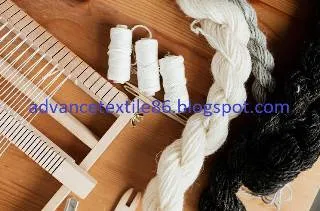What are synthetic fibers?
Synthetic
fibers are man-made fibers that are obtained directly from living organisms
through chemical synthesis. These are the results of extensive research by
scientists into the improvement of naturally occurring animal and plant fibers.
The fibers are usually made by extruding fiber-making materials through
spinnerets and are called synthetic fibers.
At
first, the invented fully synthetic fiber was glass fiber. Then the first
commercially developed viscose rayon was produced by the UK company Courtaulds in
1905. The fully synthetic first fiber Nylon was developed by Wallace
Carothers an American researcher at the chemical firm DuPont in the 1930s.
Synthetic
fibers are made from synthesized polymers like small molecules. The compounds
that are used to make these fibers come from raw materials like petroleum-based
chemicals or petrochemicals. These substances are polymerized into a chemical
that bonds two adjacent carbon atoms. Different chemical compounds are used to
make different types of synthetic fibers.
Although
many types of synthetic polymer-based fibers are valued as potentially valuable
commercial products, four of them - nylon, polyester, acrylic, and polyolefin
dominate the market. These four synthetic fibers account for approximately 98
percent of the production and polyester alone accounts for about 60 percent.
Advantages of synthetic fibers
i.
Synthetic fibers do not depend either on an agricultural crop or on animal
farming.
ii.
They are generally cheaper than natural fiber.
iii.
Synthetic fibers possess unique characteristics which make them popular dress
materials.
iv.
They dry up quickly, are durable, readily available, and are easy to maintain.
v.
Synthetic fibers are more stain-resistant than natural fibers.
vi.
These fibers do not shrink easily.
vii.
They are quick-drying and need very little or no ironing
viii.
They last longer as compared to fabrics made from natural fibers.
ix.
These fibers are strong so they can take up heavy things easily.
x.
Synthetic fibers retain their original shape so it's easy to wash and wear.
xi.
These can easily be stretched out.
xii.
These fibers are generally soft so they are used in clothing materials.
xiii.
Varieties of colors possible in synthetic fibers.
xiv.
Synthetic fibers can be used in filters and artificial wool.
xv.
These are more durable than most natural fibers and will easily pick up
different colors.
xvi.
Many synthetic fibers are more water-resistant and stain-resistant than natural
fibers.
Disadvantages of synthetic fibers
i.
Synthetic fibers do not absorb water or sweat in hot and humid weather. Therefore,
garments made of synthetic fibers stick to the body and make the wearer
uncomfortable.
ii.
These fibers melt and burn easily.
iii.
Synthetic fibers that catch fire shrink the bead structure stuck to the skin. So,
it is not advisable to use clothes made from synthetic fibers when working near
flames/fires in the kitchen.
iv.
These fibers are non-biodegradable, so they can cause soil pollution.
v.
These fibers are generated more electrostatic charge by rubbing, than with
natural fibers.
vi.
These fibers are not skin-friendly, so it is uncomfortable for long-wearing.
vii.
These fibers are prone to damage by hot washing.











0 Comments